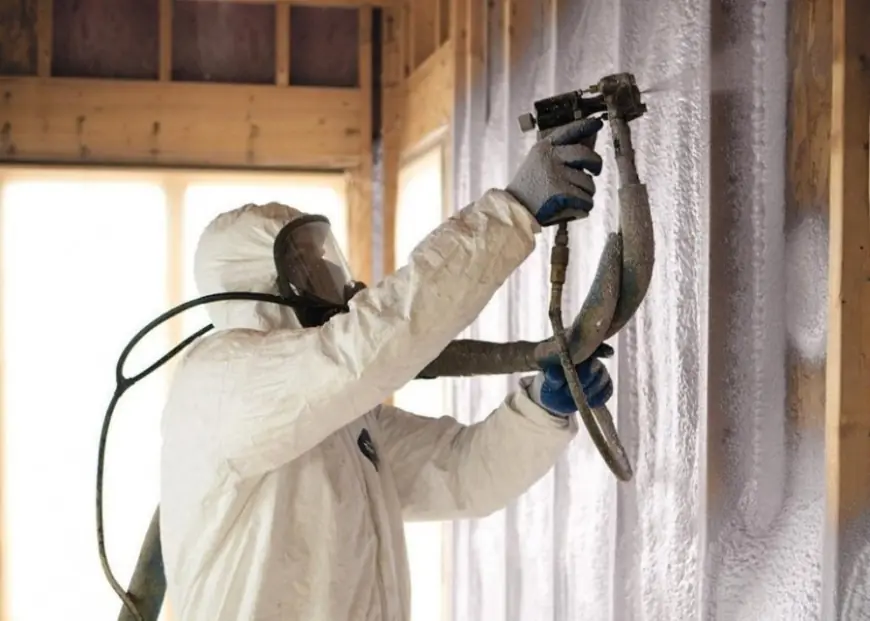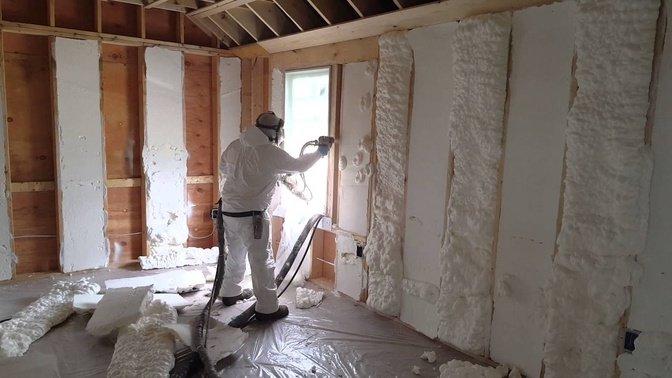A Comprehensive Analysis of Wall Insulation Systems for Modern Buildings

Wall insulation systems play a central role in creating durable, energy-efficient, and code-compliant modern buildings. By addressing thermal resistance, air movement, and moisture control, these systems protect structural integrity and improve indoor comfort. For property owners and developers, selecting the right wall insulation solution is directly tied to operational savings, long-term resilience, and compliance with building standards.
Role of Wall Insulation in Modern Building Performance
Wall insulation acts as a protective layer that supports both energy efficiency and asset preservation. Beyond comfort, it reduces heating and cooling demand, protects structures from condensation, and strengthens compliance with environmental standards.
Thermal Performance in Building Envelopes
Insulated walls slow down heat transfer, keeping indoor spaces stable across seasons. This reduces reliance on HVAC systems and contributes to measurable energy savings.
Structural Protection Against Moisture
Moisture infiltration is one of the leading causes of wall deterioration. Insulation systems designed with vapor control prevent condensation, reducing risks of mold growth and long-term material degradation.
Types of Wall Insulation Systems
Different wall insulation solutions are used in modern construction depending on building design, climate conditions, and performance requirements. Each system provides unique advantages and limitations.
Cavity Wall Insulation
Cavity insulation fills the gap between inner and outer wall layers. It is effective for reducing heat transfer and is often combined with additional vapor control layers in commercial projects.
External Wall Insulation Systems
These systems involve fixing insulation boards to the outside of walls, then coating them with protective finishes. They improve thermal performance while shielding structures from weather exposure.
Internal Wall Insulation
Installed inside building envelopes, this approach adds thermal resistance without altering external appearance. It is common in retrofits where external modifications are restricted.
Spray Foam Wall Insulation
Closed-cell spray foam provides both insulation and air sealing. It adheres to wall substrates, creating a continuous thermal barrier and improving structural rigidity.

Comparison Table: Common Wall Insulation Systems
Acoustic and Environmental Benefits
Wall insulation systems do more than regulate temperature. They reduce sound transmission and improve overall indoor environmental quality.
Sound Control in Dense Areas
Insulated walls reduce airborne noise transfer between exterior and interior spaces. This is especially important for commercial buildings in urban areas where soundproofing supports productivity and comfort.
Contribution to Green Building Standards
Energy savings achieved through effective insulation support LEED certification and other green building standards. Insulation is a measurable factor in environmental ratings that improve property value.
Building Code Compliance and Safety Standards
Wall insulation systems must meet specific fire, energy, and structural codes. Compliance ensures not only safety but also long-term durability.
Fire Resistance Requirements
Insulation materials are tested for flame spread and smoke development. Fire-rated wall assemblies with mineral wool or closed-cell spray foam improve safety in high-occupancy buildings.
Energy Code Performance
Modern building codes specify minimum R-values for wall assemblies. Insulation helps buildings achieve compliance while improving energy ratings and lowering operational costs.
Long-Term Value and Maintenance Considerations
Insulation selection impacts both immediate energy savings and the long-term resilience of a property. Systems designed for durability require less maintenance and protect building assets over decades.
Resistance to Settlement and Degradation
Spray foam and external insulation systems remain stable over time, reducing gaps or voids that compromise efficiency. Materials resistant to moisture also prevent rot and microbial growth.
Lifecycle Cost Advantages
Although advanced insulation systems often involve higher upfront investment, their long-term value comes from reduced energy costs, compliance benefits, and improved building durability.
Common Question: How Do Wall Insulation Systems Improve Building Durability?
Wall insulation protects building structures from thermal stress, moisture, and air infiltration. By preventing condensation and stabilizing indoor temperatures, insulation reduces the risk of material degradation, mold growth, and structural strain. This directly extends the lifespan of walls and lowers maintenance needs.
Conclusion
Wall insulation systems are central to modern building performance, delivering energy efficiency, code compliance, and asset protection. From cavity and external systems to advanced spray foam applications, each solution contributes to improved thermal resistance, moisture control, and occupant comfort.
For property owners, the long-term benefits of well-designed wall insulation go beyond energy savings. By investing in durable, compliant systems, buildings achieve stronger performance, reduced operating costs, and improved market value. Insulation is not just a technical feature—it is a strategic component of building resilience, best achieved with the expertise of a trusted spray foam insulation company.
FAQs
Which wall insulation system provides both thermal and structural benefits?
Closed-cell spray foam insulation delivers high thermal resistance and bonds to wall substrates, adding structural rigidity.
Can external wall insulation improve building appearance?
Yes. External insulation systems are finished with renders or cladding, which can modernize the façade while boosting performance.
Does insulation reduce noise between interior spaces?
Insulated wall systems reduce airborne sound transfer, improving privacy and comfort within multi-unit or commercial properties.
How does insulation affect compliance with green building standards?
Effective insulation contributes to reduced energy use, supporting credits for LEED and other environmental certifications.
What is the most moisture-resistant wall insulation option?
Closed-cell spray foam and external wall systems offer the strongest protection against moisture, reducing condensation risks.
Reviewer: With nearly a decade in the spray foam insulation field, William Harris reviewed this post and provided guidance that reflects both technical understanding and real-world marketing experience.
What's Your Reaction?
 Like
0
Like
0
 Dislike
0
Dislike
0
 Love
0
Love
0
 Funny
0
Funny
0
 Angry
0
Angry
0
 Sad
0
Sad
0
 Wow
0
Wow
0











































.jpeg)









